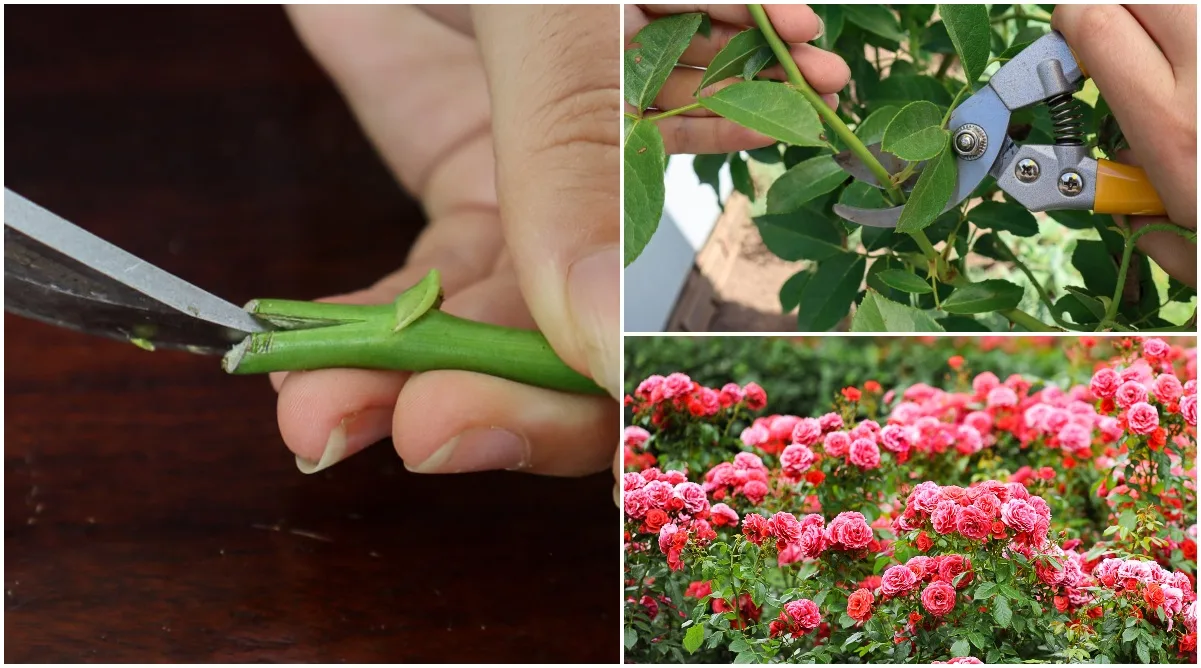
Roses are beloved by gardeners everywhere. They have spawned various societies dedicated to their appreciation and massive gardens showcasing the thousands of hybrids on the market today.
Despite their reputation for being tricky, roses aren’t more difficult to care for than other perennials.
And, as a bonus, they aren’t difficult to propagate either.
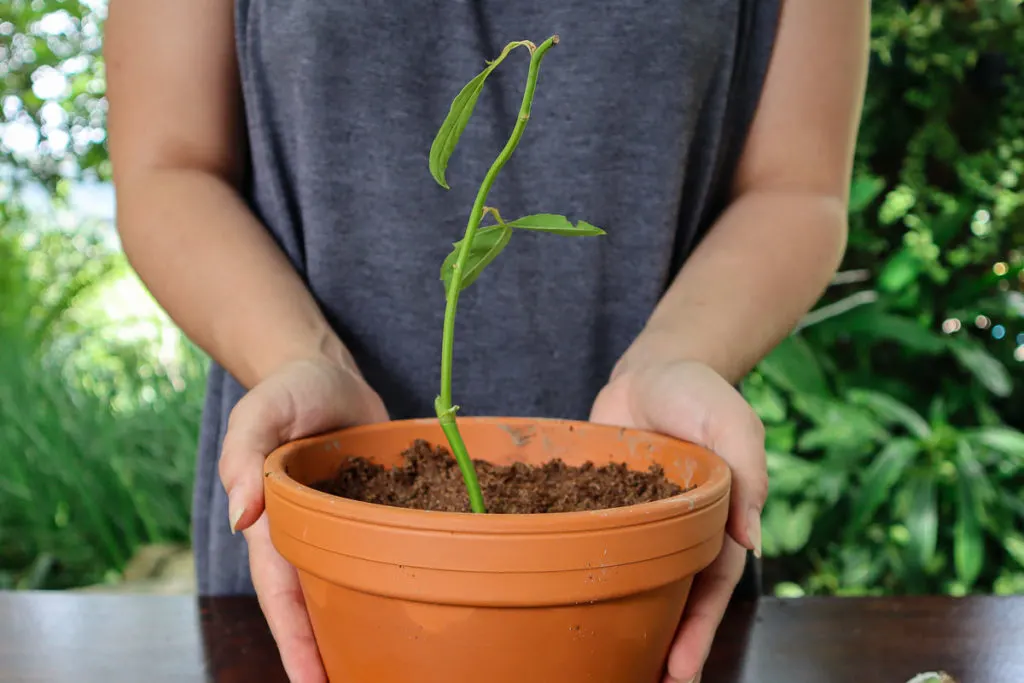
Roses are propagated using the same steps as other woody plants, including hydrangeas and lavender. With some consideration of the variety and adequate post-cutting care, you’ll be able to grow a brand new rose bush at no cost.
When To Propagate
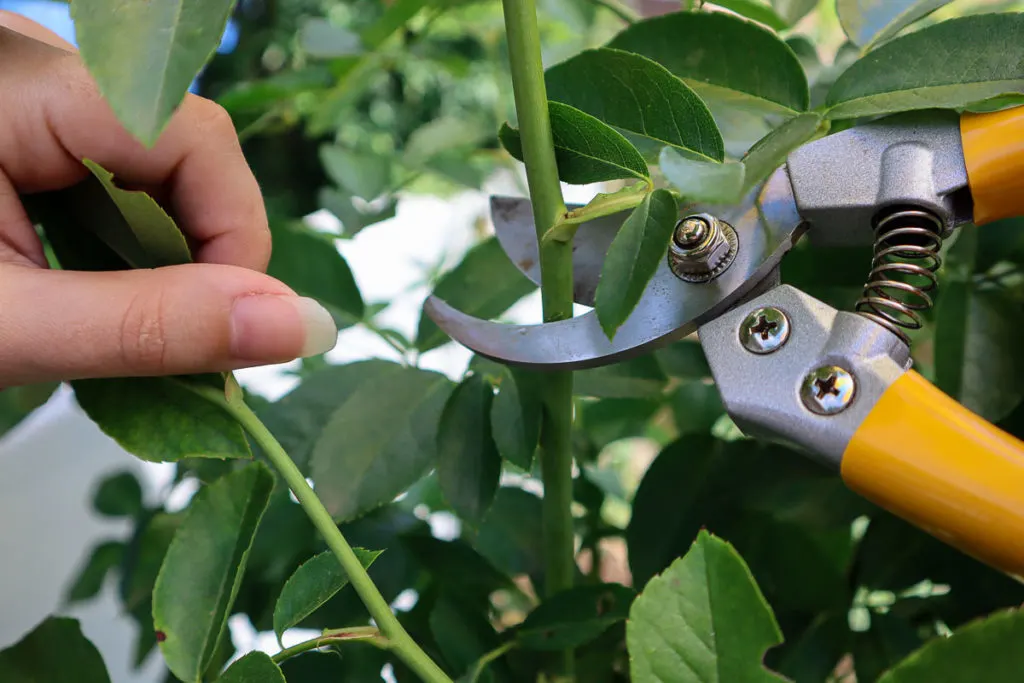
Roses are propagated in spring or early autumn. There are opposing camps fighting over which period is best – before or after flowering. But, as long as it’s not too hot or too cold, you should see results.
Before you get started, keep in mind that it may take several years for a propagated rose to produce flowers. They are also a bit fussier than plants bought from a nursery, depending on your chosen type.
But, if you have a spare rose bush and a bit of time on your hands, it can still be a fun and rewarding experience, yielding masses of flowers after a few years.
Which Roses Are Best?
While all rose types are propagated using the same method, some are easier to propagate than others.
Hybrid roses are typically grafted onto a hardy and stable rootstock to ensure strong growth. When taking a cutting from these plants, that stable base is no longer around, meaning growth and care will become tricker.
Hybrids, due to their growing concerns, are also tougher to root and are less reliable options for propagation.
As a general rule, it’s best to choose established rose species that are not grafted. Look for plants labeled ‘shrub roses’ for the ideal propagating specimen.
How To Propagate Roses From Cuttings
Clean Your Tools
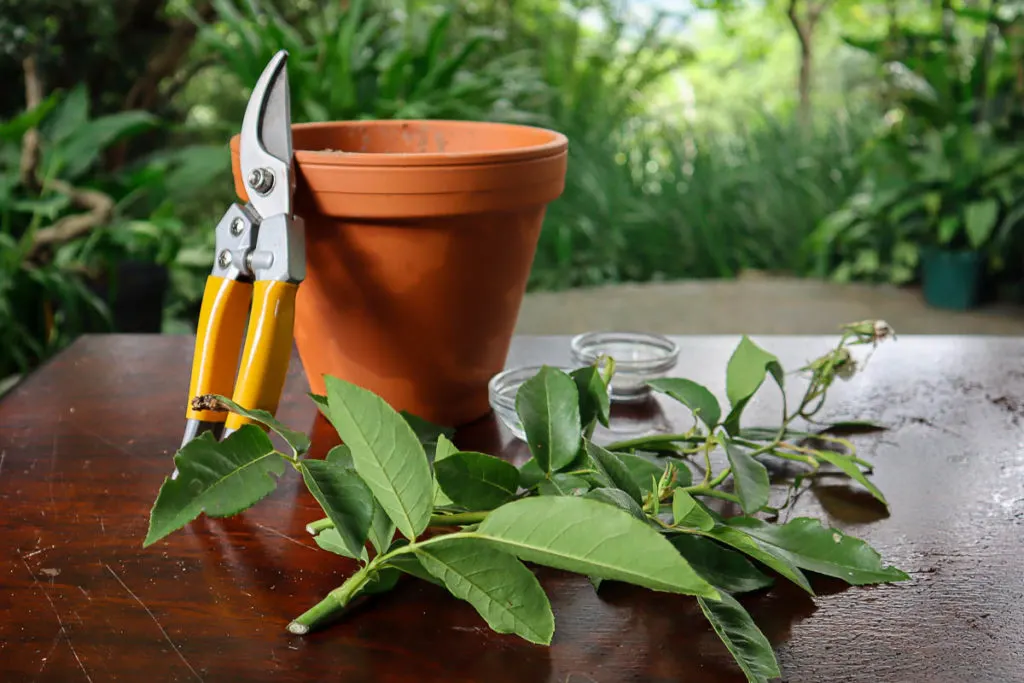
To propagate roses, you’ll need a sharp pair of shears and a pot. But, before you get started, it’s vital to clean everything thoroughly.
A 5% bleach solution will remove any potential germs or harmful bacteria from your shears. This is especially important if you have recently used your shears, or if the pot is recycled, as they can spread disease to your new cutting or to the original plant.
Also, make sure your shears are as sharp as possible. It is difficult to make a clean cut with blunt shears, which damages the stem and prevents healing in the parent plant. Damaged stems are far less likely to grow back, can attract diseases, and may experience health issues later on.
Prepare The Soil
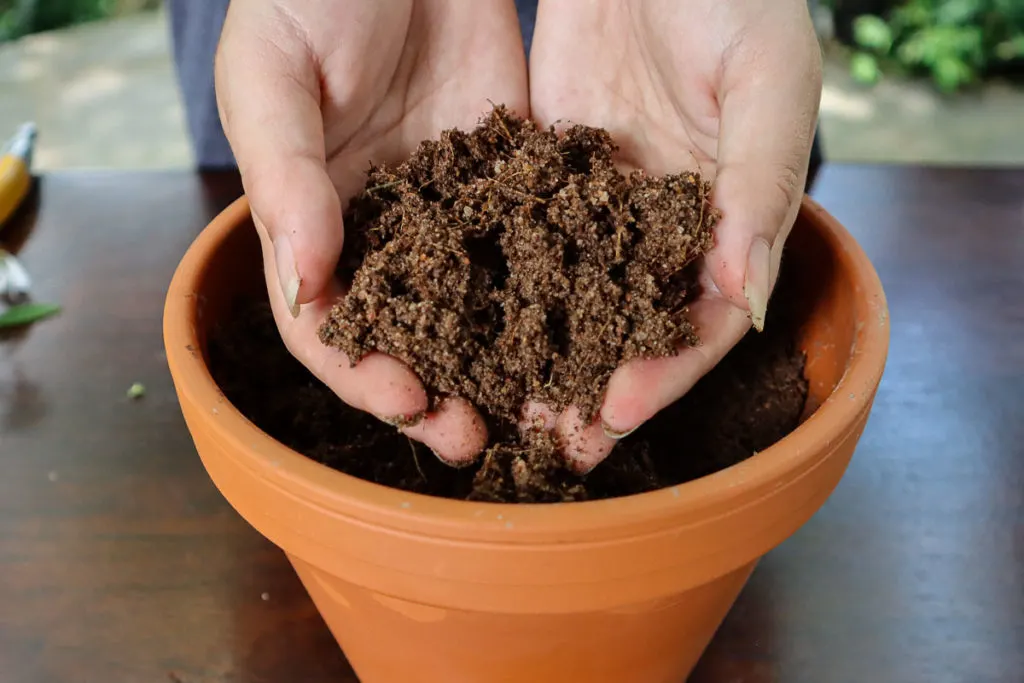
Roses are best propagated in specialized rose potting soil to provide the right conditions. If you cannot find any rose-specific potting soil online or at your local nursery, you can also make your own soil mix by combining equal parts coconut coir and river sand.
The coconut coir holds more than 10 times its own weight in moisture, providing the ideal conditions for root growth. The river sand improves drainage in the pot, preventing the stem from rotting.
Coconut coir is a sustainable alternative to peat moss, so you can use some of that instead if you have any on hand. Perlite also improves drainage and can be used as a replacement for river sand.
Mix your soil thoroughly and add to a pot deep enough to accommodate the stem (at least 4 inches). Water and allow the excess to drain from the drainage holes before planting to avoid washing away the rooting hormone later on.
Identify The Stem
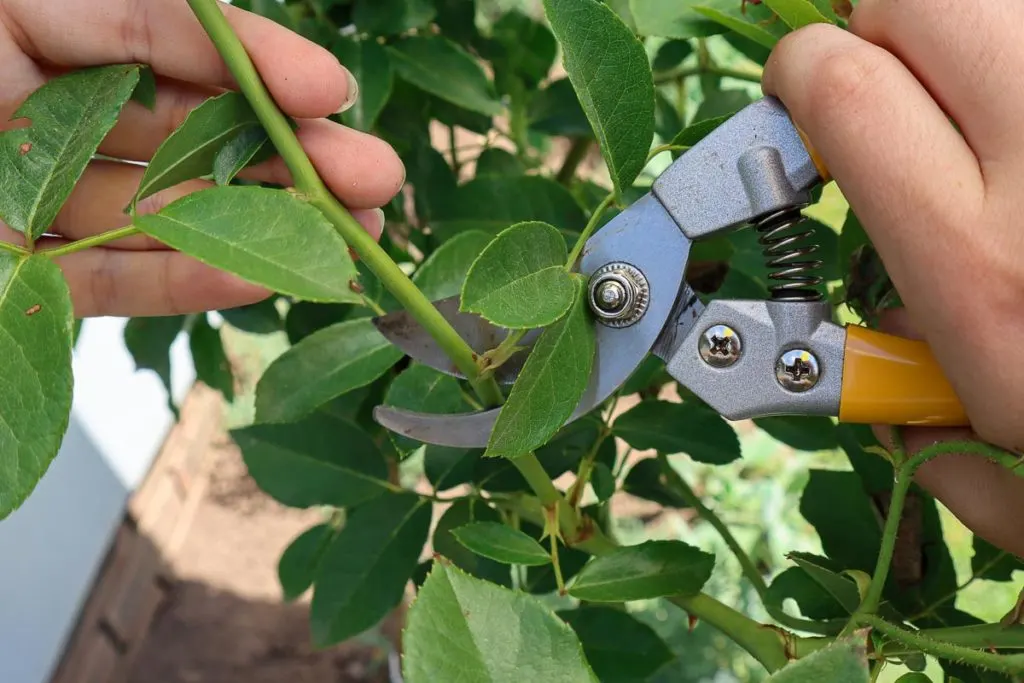
Next, it’s time to choose the perfect stem. It should be green and healthy with no signs of damage or disease. When propagating in fall, stems that have just finished flowering are preferred, combining deadheading with propagating.
The stem should also be at least 6 inches long, preferably 8, and should have a few sets of leaves. Measure from the base of flower 6 inches down as past a node (the point where the leaves emerge).
Take Cuttings
Grab your sharp pruning shears and remove the stem from the plant. Cut at a 45° angle to increase surface area below a node. This is the point where root growth will start, so avoid cutting too close to prevent damage.
Cuttings are best taken in the early mornings when the roots are saturated. Avoid removing cuttings during the hottest part of the day as the stems will lack moisture, causing them to dry out quicker and limiting your chances of rooting.
Remove The Leaves And Flower
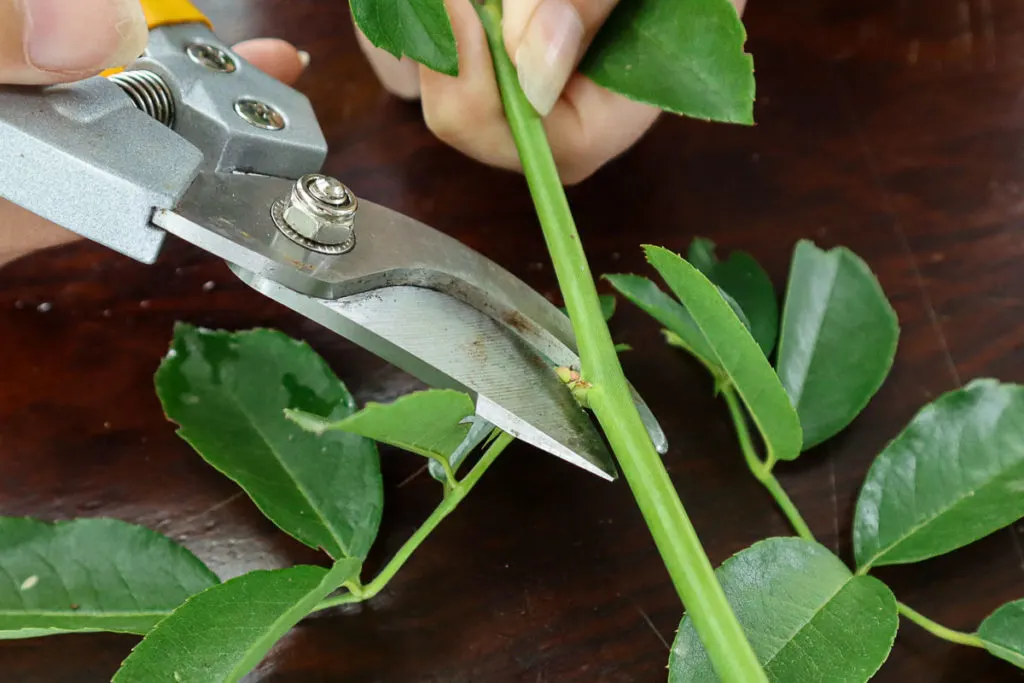
Trim the flower off the top of the cutting. At the same time, remove any buds along the stem. This will direct the plant’s energy toward root growth rather than flowering.
Next, remove the bottom sets of leaves along the stem, leaving only the top set. The more leaves the cutting has, the more energy the plant requires to keep them alive.
Your final cutting should have at least two leaves on the top end and one or two exposed nodes on the bottom end.
Split The Stem
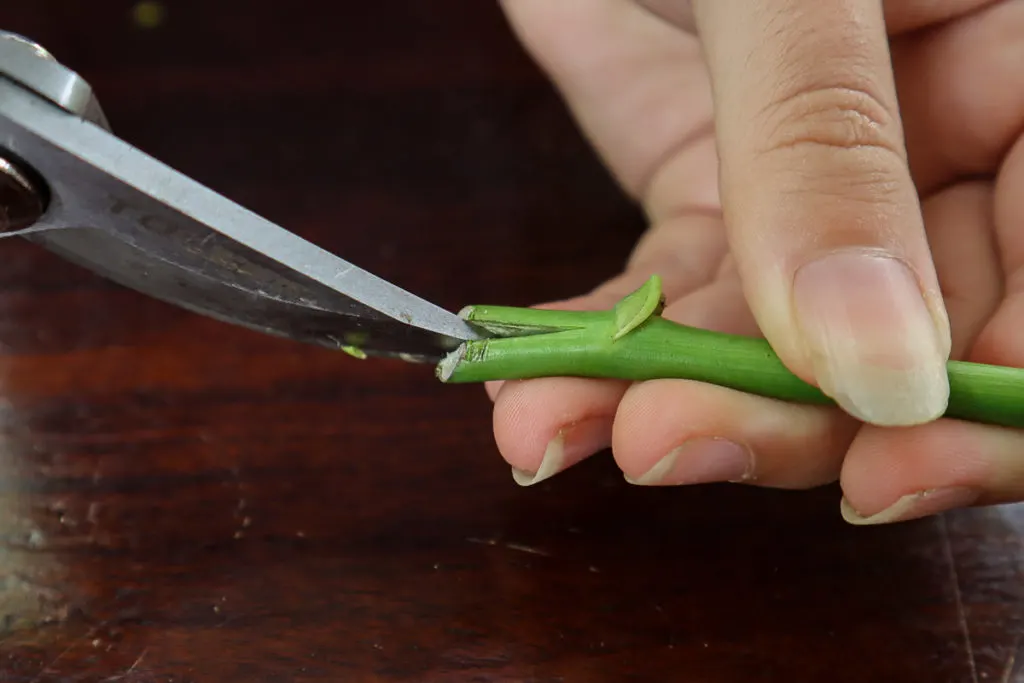
Take the bottom end of the cutting and, using your shears or a sharp knife, gently split the end into four sections. This step is not absolutely necessary, but it does increase the amount of rooting hormone on the stem and improves your chances of success.
You can also make one or two small slits in the outer layer of the stem rather than splitting the entire thing. You will need a steady hand to avoid damaging the node above the cut as this will ruin any potential chances of rooting.
Dip In Rooting Hormone
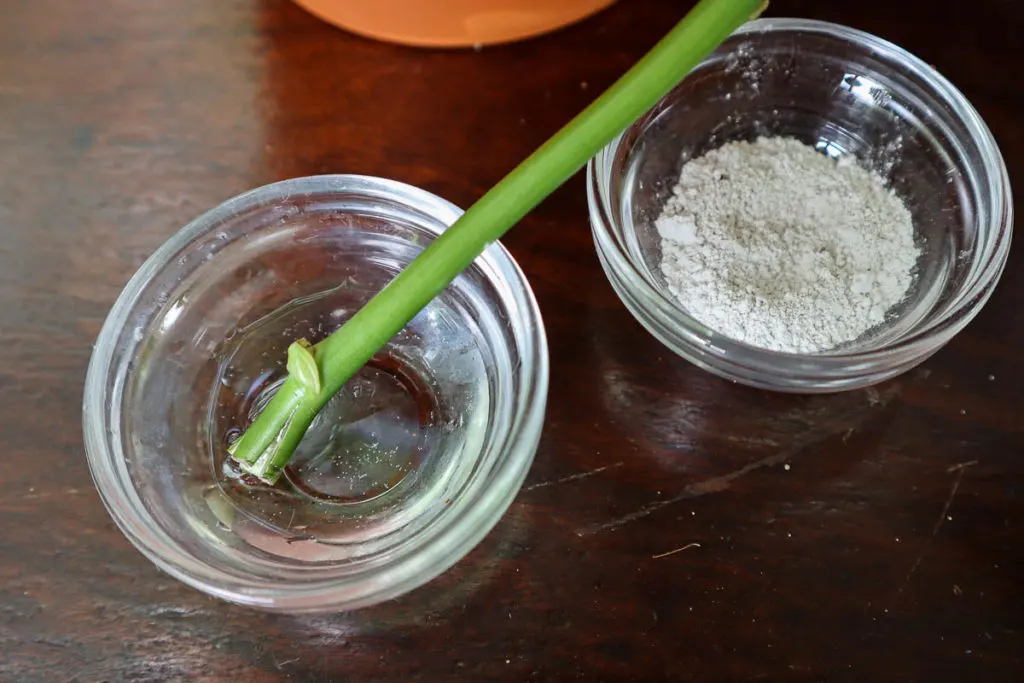
Rooting hormone is a powdered substance that stimulates root growth in cuttings and limits the risk of disease. While it is not vital in the process, it does greatly improve your chances of rooting, especially for woody cuttings that already have a low rooting chance.
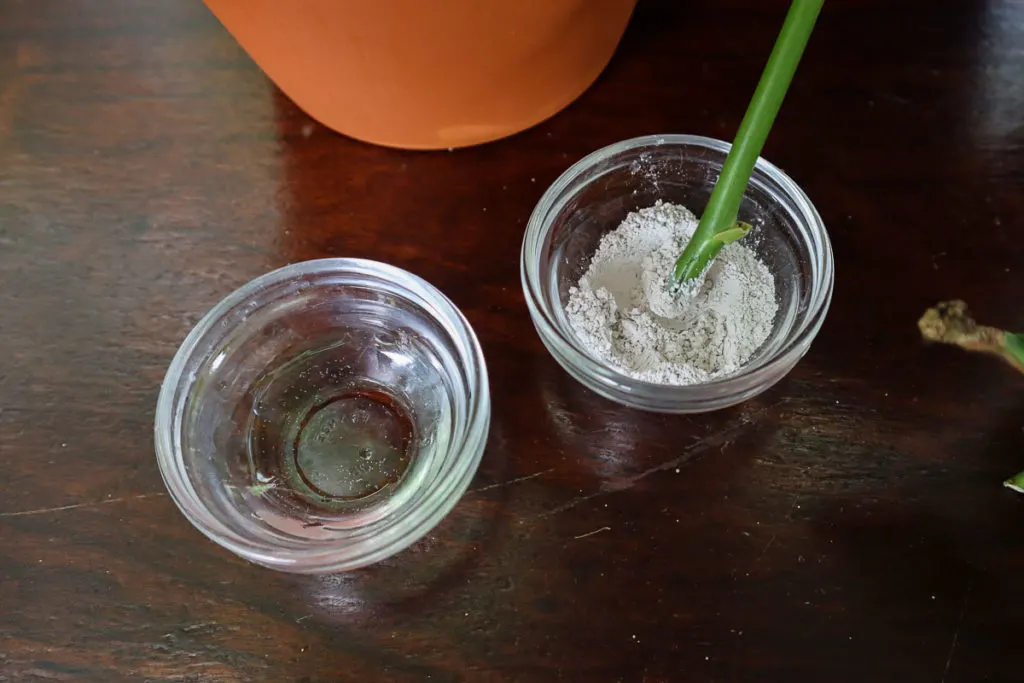
Decant a small amount of the powder into a separate container. This prevents any contamination of the original bottle. Dip the end of the cutting into water and then into the powder, ensuring all areas are completely covered.
When you’re finished, don’t put the remaining rooting powder back into the bottle as this can spread disease. Throw any excess away instead.
Plant
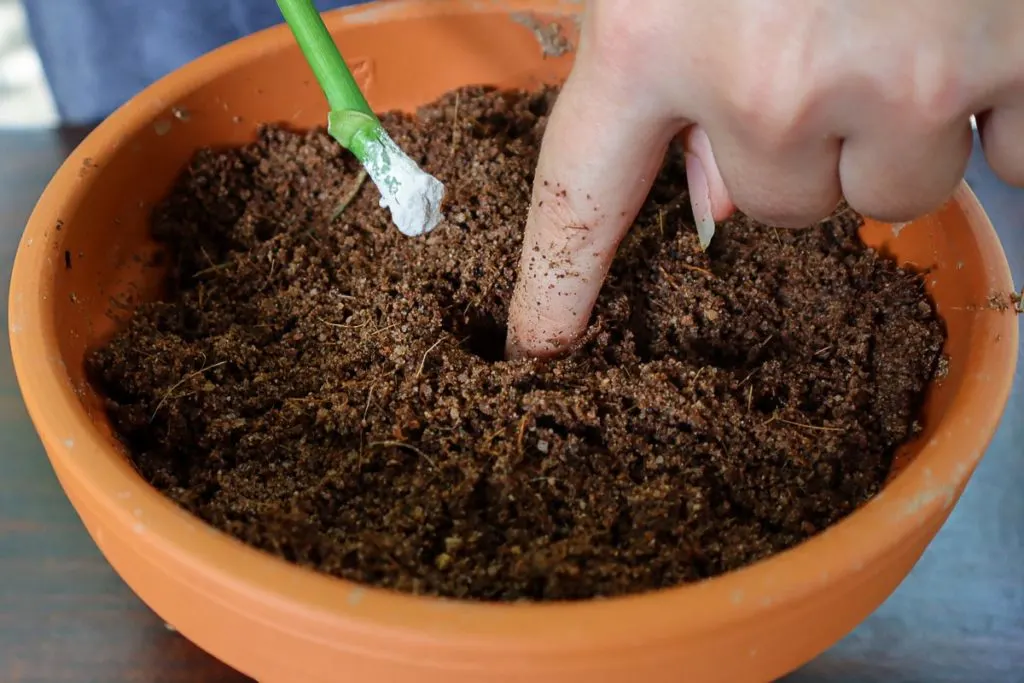
Make a hole with your finger or a pencil in the pre-moistened soil deep enough to bury half of the cutting. Place the cutting in the hole, avoiding touching the sides to keep as much rooting hormone on the end as possible.
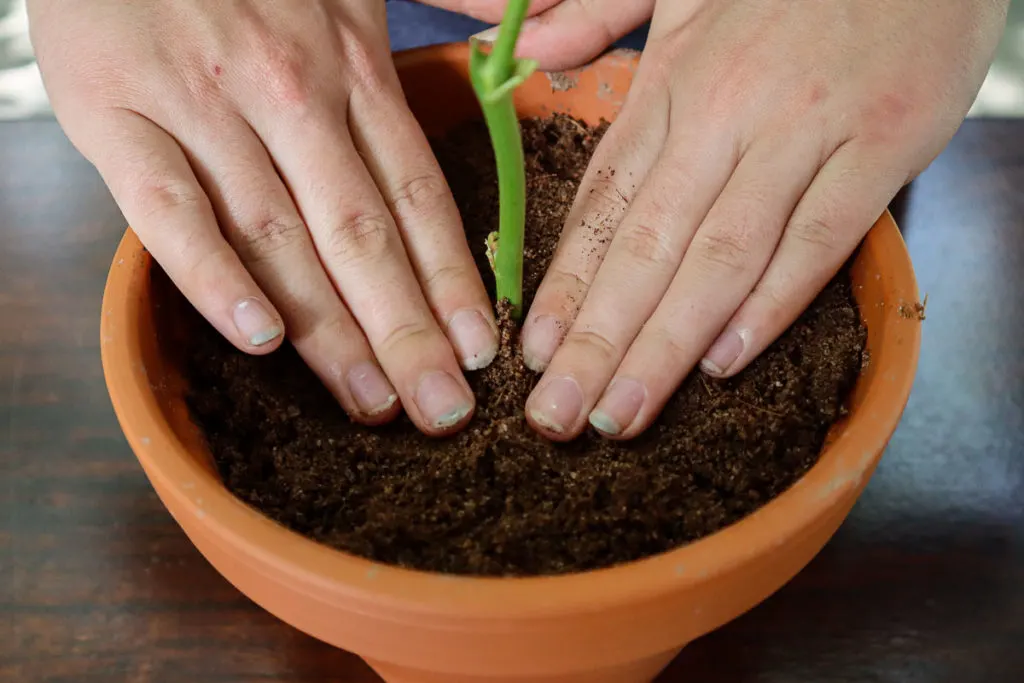
Firm down around the cutting after planting to hold it in place.
Cover In Plastic
Woody cuttings need a warm and humid environment to develop roots. To create the ideal conditions for root growth, you can create a mini-greenhouse by covering your pot with a clear plastic bag.
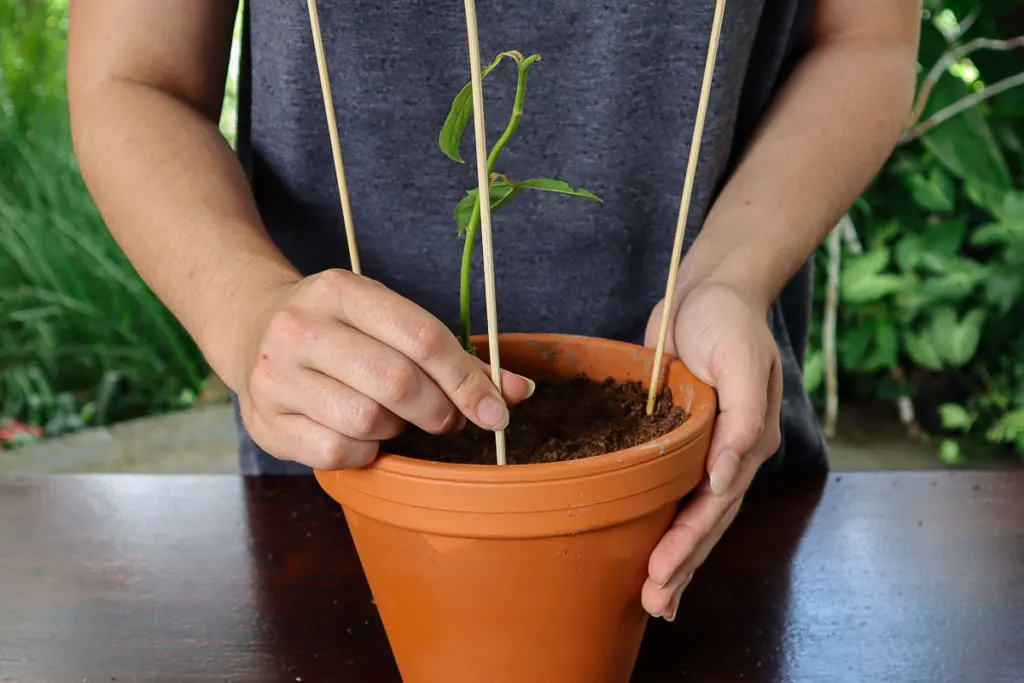
Bury a few sticks or skewers in the sides of the pot to hold up the plastic. This will stop any condensation from dripping onto the cutting and resulting in rotting. Then, place the plastic upside down over the pot so that the entire thing is covered.
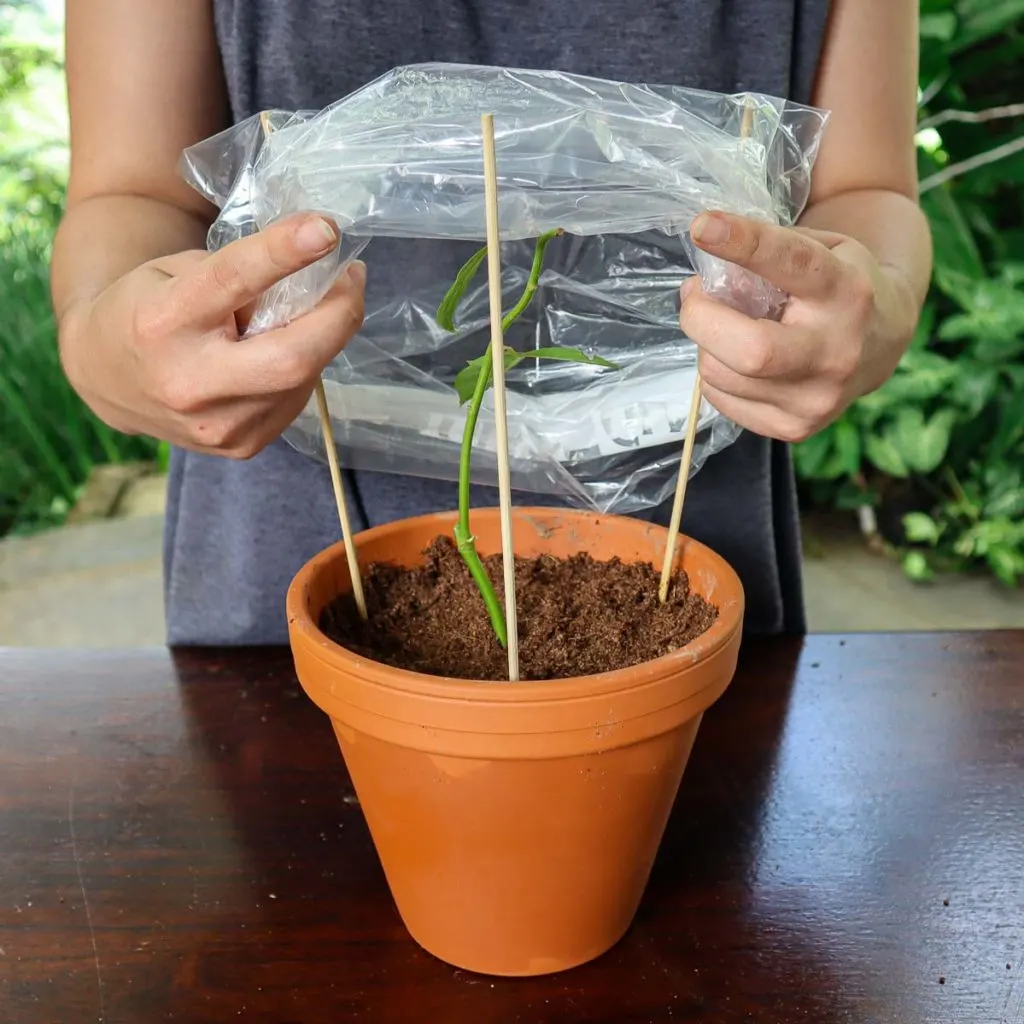
Leave your pot in a warm spot away from direct sun as this can burn the vulnerable new growth.
Post-Planting Care
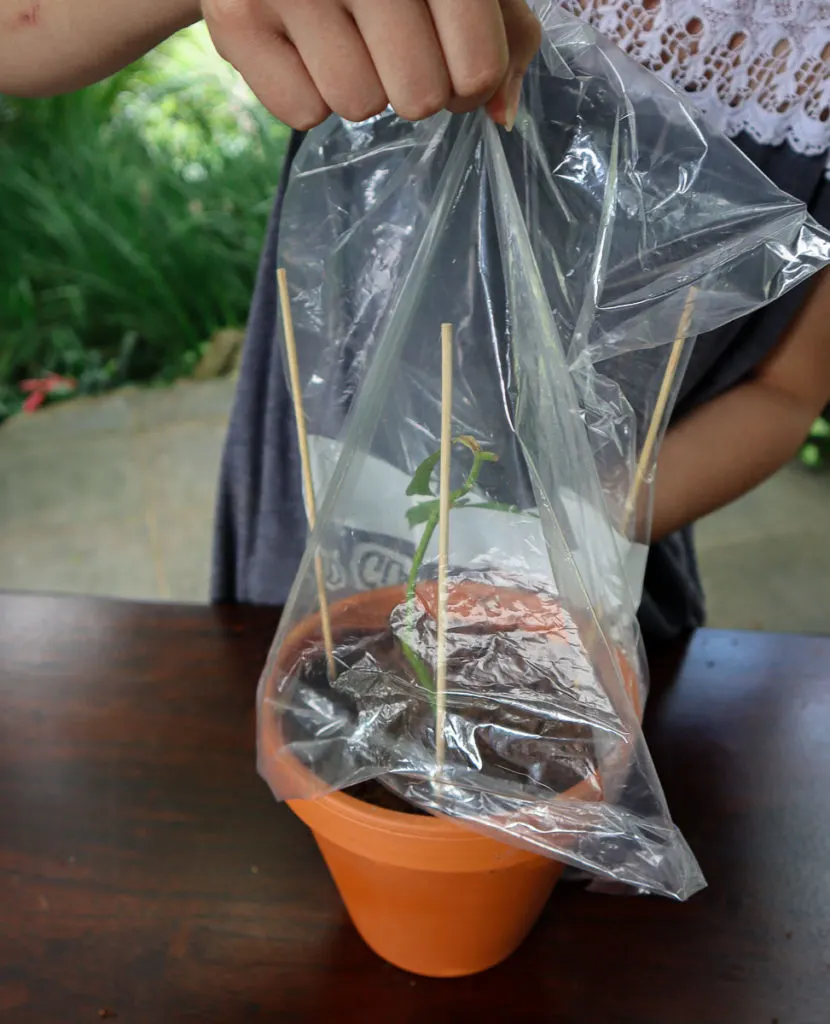
Continue to keep the soil moist by removing the plastic bag and misting or watering regularly. When you replace the bag, make sure there is enough air inside to prevent the stem from rotting.
Root growth should take two to three weeks. If there is no green new growth present, you can gently pull on the cutting to determine if roots have developed.
Once the roots have grown around an inch or two long, or you notice new leaves developing on the stem, you can transplant your rose out into the garden. Expose it to outdoor conditions for a few hours each day before planting to allow it to acclimatize and to limit shock.
If your propagation efforts aren’t successful, don’t stress. Root growth is not guaranteed and it may take a few tries before you get it right. Give them the right conditions, keep an eye on moisture levels, and you should see root growth soon enough.
